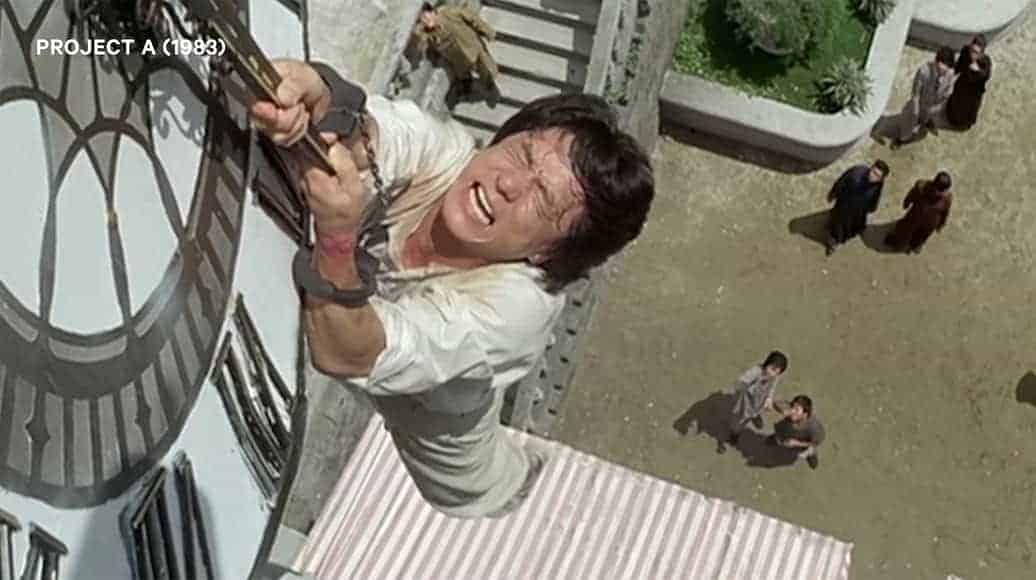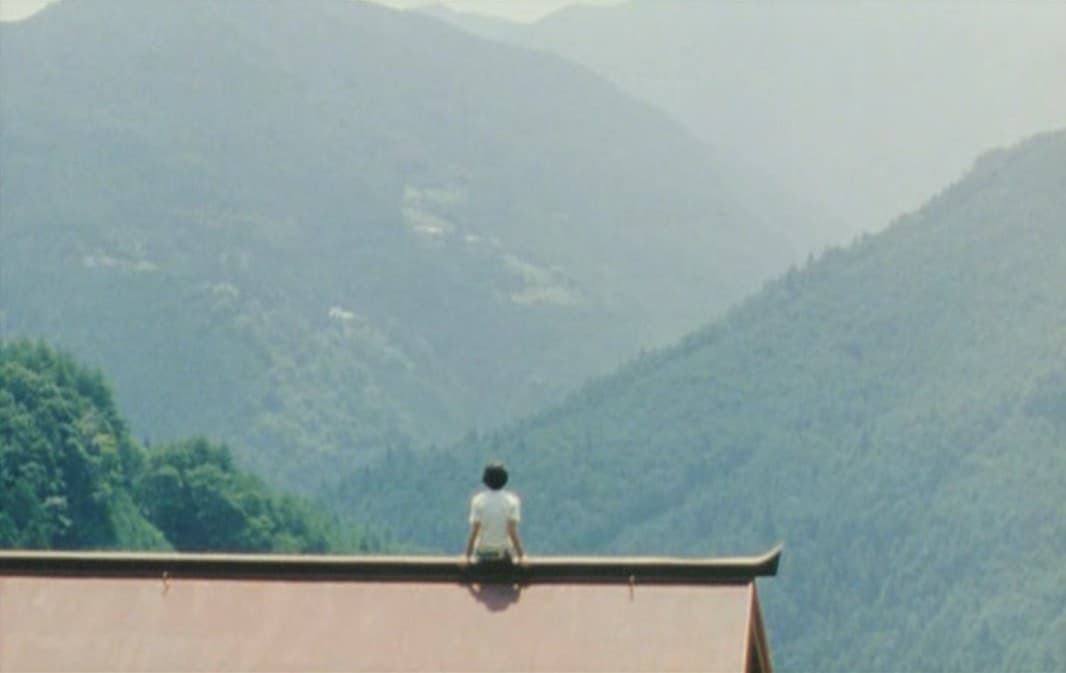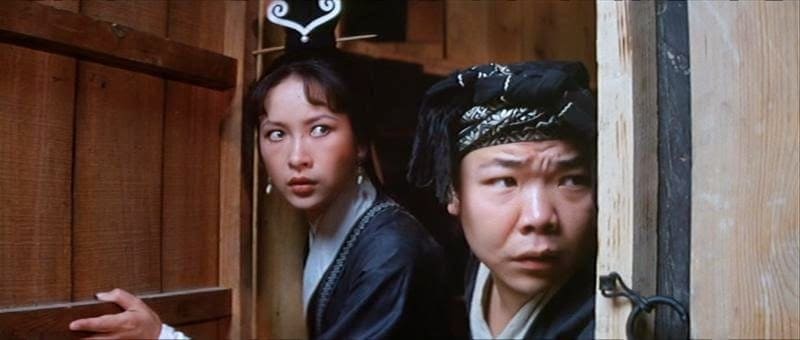Film series sheds new light on dynamic movement in Japanese cinema with a selection of overlooked titles, including newly subtitled 35mm prints
New York, NY (February 27, 2019) – With its inception in the late 1950s and early 1960s, the Japanese New Wave ushered in a postwar generation of politically engaged and artistically adventurous filmmakers that radically transformed the country's cinema in theory and practice. Looking beyond internationally lauded figures such as Nagisa Oshima and Masahiro Shinoda, The Other Japanese New Wave: Radical Films from 1958-61 aims to reexamine this dynamic moment in Japanese film history with the introduction of work by lesser-known studio directors, auteurs, documentarists and student filmmakers, including newly subtitled rarities imported from Japan never-before-seen in the U.S.
The series launches on April 5 with Kiju Yoshida's debut feature Good-for-Nothing, introduced by series curator Go Hirasawa. A key figure in the birth of the New Wave at Shochiku, Yoshida is representative of the major studio's attempt to attract Japan's declining movie audiences by giving fledgling assistant directors a chance to make youth-oriented feature films. Also included in the series are rarely discussed Shochiku directors Eitaro Morikawa (The Tragedy of Bushido), Osamu Takahashi (Only She Knows) and Tsutomu Tamura, who simultaneously made their first films as part of the New Wave alongside Yoshida. A highlight of the series, Tamura's exceedingly unavailable The Samurai Vagabonds will screen on an archival 35mm print with new English subtitles prepared by Japan Society. Rounding out the selection of studio films in the series are Yoshida's overlooked second feature for Shochiku (Blood is Dry), a stark critique of capitalist consumerism,and two bold Nikkatsu titles directed by Koreyoshi Kurahara (The Age of Our Own and The Warped Ones) that build upon the themes and formal experiments of the studio's youth-in-revolt “Sun Tribe” (taiyozoku) films.
Other series highlights include a selection of films made outside of the studio system by filmmakers, theorists and writers invested in uniting film theory with praxis. Following a free curator's talk on April 6, Hirasawa introduces the shorts program “New Wave Rarities,” which includes a self-produced student film from Nihon University Film Study Club (Conversation Between Nail and Socks), a documentary by Shinkichi Noda (Forgotten Land), and an experimental portrait of political unrest (Anpo Joyaku) by Toshio Matsumoto (Funeral Parade of Roses). Later in the same day, Hirasawa introduces a 35mm screening of Eizo Yamagiwa's virtually unknown independent feature The End of Love. Long thought lost until a negative was discovered only a couple of years ago, The End of Love will screen in the U.S. for the first time, presented with new English subtitles by Japan Society.

“The history of the Japanese New Wave remains largely unwritten, especially for English-speaking audiences,” says Kazu Watanabe, Deputy Director of Film at Japan Society. “While major films by canonical filmmakers are widely screened and analyzed, they only scratch the surface of this fascinating yet elusive period of Japanese filmmaking. I'm grateful to Go Hirasawa for coming up with such a deep and wide-ranging selection of titles—full of discoveries that offer new insight into the genesis and contexts of the New Wave in Japan—and I greatly look forward to sharing them with New York audiences.”
The Other Japanese New Wave: Radical Films from 1968-61 is curated by Go Hirasawa, researcher at Meiji-Gakuin University, and organized by Japan Society. In coordination with Japan Society, Harvard Film Archive will host the series concurrently (April 1-27) in Cambridge.
SCREENING SCHEDULE
All films in Japanese with English subtitles.
Good-for-Nothing (Rokudenashi)
Fri, Apr 5 at 7 pm**
Dir. Kiju Yoshida, 1960, 88 min., 35mm
In this directorial debut by Kiju Yoshida—a key figure of postwar Japanese cinema and the Shochiku New Wave, along with Nagisa Oshima and Masahiro Shinoda—four bored college students decide to steal money from a company run by one of their fathers. In the process, the company secretary takes an interest in one of the aimless young men, in whom she senses some potential, and tries to change him. A representative work of the New Wave in its aesthetics and political overtones by one of its major filmmakers, Good-for-Nothing offers a complex perspective on class with cutting-edge direction and visual style. Print courtesy of The Japan Foundation.
Shorts Program: New Wave Rarities
Sat, Apr 6 at 4:30 pm*
Approx. 78 min., 16mm and digital
Three rare short films by artists who played a leading role in the birth of the New Wave: Conversation Between Nail and Socks (1958), the first self-produced work by the Nihon University Film Study Club, directed by Katsumi Hirano and Hiroo Ko; Forgotten Land (1958), a documentary portraying the poverty-stricken area of Honshu's northernmost region, directed by Shinkichi Noda, who led the Association of Documentary Filmmakers (Kiroku Eiga Sakka Kyokai); and Anpo Joyaku (1959) by Toshio Matsumoto, which captures the context of the 1960 Anpo Treaty and the whirlwind of debate surrounding it. 16mm prints courtesy of the National Film Archive of Japan. Newly subtitled by Japan Society.
The End of Love (Kyonetsu no Hate)
Sat, Apr 6 at 7 pm*
Dir. Eizo Yamagiwa, 1961, 78 min., 35mm
A leading postwar Japanese film critic and theorist who co-founded the seminal film magazine Eiga Hihyo (Film Criticism) in 1957, Eizo Yamagiwa made his directorial debut with this independent feature—long thought lost until a negative was recently discovered—about a group of idle bourgeois students known as the “Roppongi Tribe” (Roppongi zoku). Depicting the resignation and nihilism of the postwar generation in the years following the Anpo Treaty conflicts through a coming-of-age narrative, Yamagiwa offers sharp criticism of the prevalent characterizations of Japan's new youth offered by Nikkatsu's taiyozoku (“Sun Tribe”) films and the New Wave at large. Print courtesy of the National Film Archive of Japan. Newly subtitled by Japan Society.
The Age of Our Own (Warera no Jidai)
Sat, Apr 20 at 4:30 pm
Dir. Koreyoshi Kurahara, 1959, 98 min., 35mm
This controversial film by directorKoreyoshi Kurahara is based on a story by Nobel Prize-winning author Kenzaburo Oe, adapted by Yoshio Shirasaka, a prolific writer who scripted masterpieces under every major Japanese production company (including Yasuzo Masumura's 1958 film Giants and Toys at Daiei studios). A college student seeks to study abroad in France to escape his daily troubles in Japan only to be met with endless frustration and ultimately forced to live an aimless life of disillusionment. Among Nikkatsu's most political films, The Age of Our Own reveals a complex, multi-faceted reaction to the anti-Anpo struggle. Print courtesy of the National Film Archive of Japan.
The Warped Ones (Kyonetsu no Kisetsu)
Sat, Apr 20 at 7 pm
Dir. Koreyoshi Kurahara, 1960, 75 min., 35mm
The game-changing experimentation of Nikkatsu taiyozoku (“Sun Tribe”) films like Ko Nakahira's Crazed Fruit (1956) and Toshio Masuda's Perfect Game (1958) paved the way for this representative work of the studio's New Wave by Koreyoshi Kurahara. A jazz-obsessed delinquent and a reckless sex worker are released from juvenile detention and wreak havoc on everyone in their paths, including the newspaper reporter who got them arrested and his bourgeois artist fiancée. Kurahara's indelible portrait of amoral youth features striking high-contrast black and white compositions, bold camera movements and a propulsive jazz score, anchored by Tamio Kawachi's mesmerizingly feral performance. Print courtesy of the National Film Archive of Japan.
Blood is Dry (Chi wa Kawaiteru)
Tues, Apr 23 at 7 pm
Dir. Kiju Yoshida, 1960, 87 min., 35mm
Kiju Yoshida's second film for Shochiku is a fierce critique of mass media, advertising and capitalist consumerism. When his employers announce massive layoffs, a salaryman takes a gun to his head in a plea for mercy on behalf of his colleagues only to unwittingly become the center of an insurance company's advertising campaign that exploits his desperate gesture for profit and markets him as a hero. Paired with Nagisa Oshima's Night and Fog in Japan (1960) as a double bill, both films were pulled from theaters days after opening due to the politically motivated censorship of Oshima's allegedly inflammatory film. Print courtesy of The Japan Foundation.
The Samurai Vagabonds (Akunin Shigan)
Fri, Apr 26 at 7 pm
Dir. Tsutomu Tamura, 1960, 83 min., 35mm
Virtually unknown outside of (and even within) Japan, this Shochiku New Wave gem is set in a mining bunkhouse wherein a woman who survives a double suicide becomes entwined in a peculiar relationship with her dead lover's brother, a killer on the run. Another significant yet overlooked progenitor of the New Wave's theoretical and formal ideals, Tsutomu Tamuraonly made this one film as a director before leaving Shochiku to create an independent production company with Nagisa Oshima and write scripts for many of the renown director's films, including The Catch (1961), Violence at Noon (1966) and Boy (1969). Print courtesy of the National Film Archive of Japan. Newly subtitled by Japan Society.
The Tragedy of Bushido (Bushido Muzan)
Sat, Apr 27 at 5 pm
Dir. Eitaro Morikawa, 1960, 74 min., DCP
Written and directed by newcomer Eitaro Morikawa for Shochiku's Kyoto studio, The Tragedy of Bushido is the first jidaigeki period drama produced by the New Wave. After a clan lord dies, a young samurai in 17th century Japan is forced to follow him in death through ritual suicide in accordance with an archaic bushido custom. Drawing a connection between the oppressive values of absolute fealty within the samurai moral code and the bureaucratic political systems of postwar Japan that continued to place priority on obedience and obligation over individual freedoms, Morikawa gave birth to a new kind of post-Anpo jidaigeki.
Only She Knows (Kanojo Dake ga Shitteiru)
Sat, Apr 27 at 7 pm
Dir. Osamu Takahashi, 1960, 63 min., DCP
The debut film by Osamu Takahashi, assistant director on Yasujiro Ozu's Tokyo Story (1953) and a Shochiku New Wave leading figure who launched the film journal Shichinin (The Seven) with his circle of fellow assistant directors (including Nagisa Oshima and Kiju Yoshida). A young woman is attacked by a serial rapist and murderer whom her detective father (played by Ozu regular Chishu Ryu) is investigating. Though she survives, the impact of the event creates increasing discord and agony for her and her loved ones. After this auspicious debut, Takahashi went on to make a couple more films for Shochiku before going independent and eventually becoming well-known as a novelist.
**Introduction by curator Go Hirasawa, followed by reception
*Introduction by curator Go Hirasawa
Tickets: $14 General Public; $11 Seniors & Students; $10 Japan Society members.
Purchase tickets to three films and save $2 off each ticket. All-Access Pass: $63
Tickets may be purchased online at japansociety.org, in person at Japan Society, or by calling the box office at 212-715-1258.
RELATED PROGRAM
New Wave: The Turning Point
Saturday, April 6 at 3 pm
Widely defined as a watershed moment in Japanese cinema, the New Wave movement also significantly contributed to the overall theoretical and philosophical transformation of post-war Japan. In this free lecture, curator Go Hirasawa introduces the films and filmmakers in the series while also going beyond them to contextualize the big picture of this historical moment. Approx. 60 min.
This event is free with the purchase of a ticket to any film in the series. Seating is limited. Ticketholders will be accommodated on a first-come, first-served basis.
The Other Japanese New Wave: Radical Films From 1958-61 is made possible through the generous support of The Globus Family.
Japan Society Film's programs are generously supported by the Lila Wallace-Reader's Digest Endowment Fund. Additional season support is provided by The Globus Family, Masu Hiroshi Masuyama, Geoff and Fumi Matters, James Read Levy, David S. Howe, Dr. Tatsuji Namba, Akiko Koide and Shohei Koide, Laurel Gonsalves, and Hiroshi Tsuyuki and Yasuko Tsuyuki.
Japan Society Film offers a diverse selection of Japanese films, from classics to contemporary independent productions. Its aim is to entertain, educate and support activities in the Society's arts and culture programs. For more, visit japansociety.org/film.

About Japan Society
Founded in 1907, Japan Society in New York City presents sophisticated, topical and accessible experiences of Japanese art and culture, and facilitates the exchange of ideas, knowledge and innovation between the U.S. and Japan. More than 200 events annually encompass world-class exhibitions, dynamic classical and cutting-edge contemporary performing arts, film premieres and retrospectives, workshops and demonstrations, tastings, family activities, language classes, and a range of high-profile talks and expert panels that present open, critical dialogue on issues of vital importance to the U.S., Japan and East Asia. Japan Society is located at 333 East 47th Street between First and Second avenues (accessible by the 4/5/6 and 7 subway at Grand Central or the E and M subway at Lexington Avenue). www.japansociety.org















